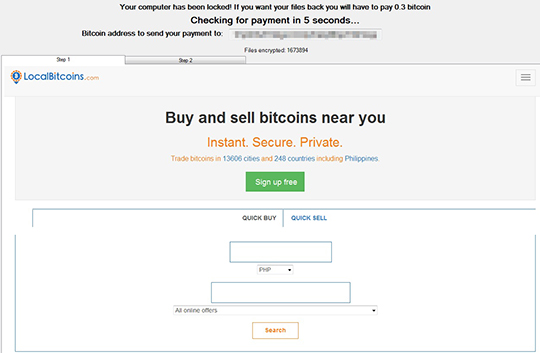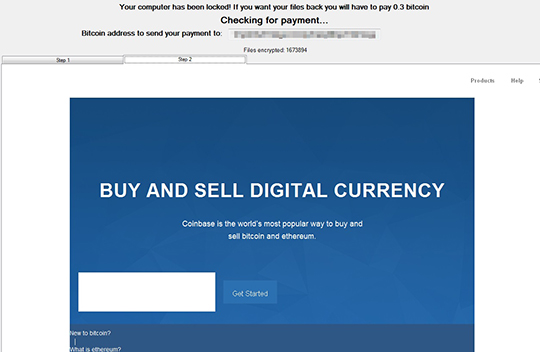RANSOM_TENSEC.A
W32/Diztakun.ASCE!tr (Fortinet)
Windows


Threat Type: Trojan
Destructiveness: No
Encrypted:
In the wild: Yes
OVERVIEW
Dropped by other malware, Downloaded from the Internet
This Trojan arrives on a system as a file dropped by other malware or as a file downloaded unknowingly by users when visiting malicious sites.
TECHNICAL DETAILS
26,624 bytes
EXE
Yes
23 Oct 2016
Displays message/message boxes, Encrypts files
Arrival Details
This Trojan arrives on a system as a file dropped by other malware or as a file downloaded unknowingly by users when visiting malicious sites.
Other Details
This Trojan renames encrypted files using the following names:
- {original filename}.encrypted
It does the following:
- Avoids encrypting the following files:
- windows.exe
- Encrypts files in the following directories:
- Desktop
- Pictures
- Music
- Start Menu
- Documents
- Application Data
- Program Files
- Program Files (x86)
- Admin Tools
- User Profile
- Personal
- Programs
NOTES:
This ransomware locks the screen and shows the following:


SOLUTION
9.800
12.860.05
26 Oct 2016
12.861.00
27 Oct 2016
Step 1
Before doing any scans, Windows XP, Windows Vista, and Windows 7 users must disable System Restore to allow full scanning of their computers.
Step 2
Note that not all files, folders, and registry keys and entries are installed on your computer during this malware's/spyware's/grayware's execution. This may be due to incomplete installation or other operating system conditions. If you do not find the same files/folders/registry information, please proceed to the next step.
Step 3
Restart in Safe Mode
Step 4
Scan your computer with your Trend Micro product to delete files detected as RANSOM_TENSEC.A. If the detected files have already been cleaned, deleted, or quarantined by your Trend Micro product, no further step is required. You may opt to simply delete the quarantined files. Please check this Knowledge Base page for more information.
Step 5
Restore encrypted files from backup.
Did this description help? Tell us how we did.

